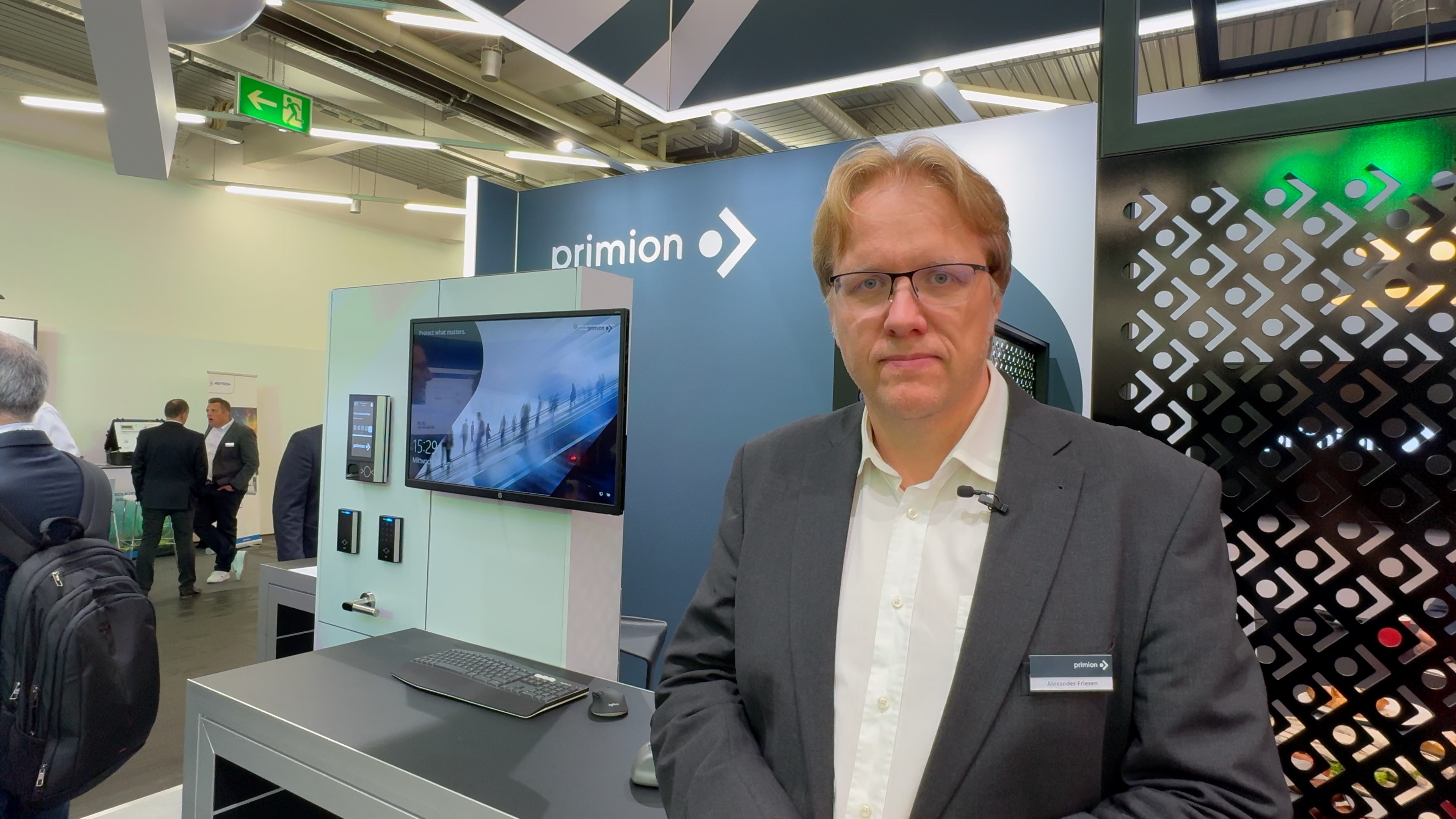Alexander Friesen, Director of R&D at Primion, on technological integration, cyber security, GDPR compliance and the role of AI in modern access systems
Welcome to an in-depth look at the future of access control in the IoT era. The integration of classic access systems into heterogeneous, dynamic IoT environments places high demands on security and data sovereignty. Primion plays a key role here – as a technology integrator, a driver of secure software development and a provider of adaptive platform solutions. The focus is not only on networking the systems, but also on securing them, ensuring legally compliant data processing and the targeted use of AI. Today, we are talking about real solutions, not pilot projects – and about how access control will work tomorrow.
Integration instead of replacement: access systems in the IoT context
‘The IoT ecosystem is not a single standard – it is a vision,’ says Alexander Friesen, Director of R&D at Primion. The vision: a world in which thousands of different systems and devices communicate seamlessly with each other. For access control systems, this means that old hardware such as door controllers, readers or wall terminals will remain in place, but they must be able to communicate with new technologies. REST APIs and adapters form the technological bridge – and Primion sees itself as their architect.
The challenge lies in the enormous variety of IT formats and communication protocols – there are around 100,000 different standards, which cannot be easily standardised in the future either. The market therefore needs integrators who can bridge technical gaps and integrate old devices into modern IT structures. Friesen sums it up: ‘An adapter like Primion is needed to bring this IoT world together.’
Networked systems, changed attack surfaces
However, increasing networking not only increases convenience – it also increases the attack surface for cybercrime. ‘Networked access components offer many possibilities – but they make the security architecture significantly more complex,’ warns Friesen. Primion is addressing this reality with a clear focus on secure software development.
An in-house team of specialists led by the CISO ensures that security aspects are taken into account early on in the development process. Friesen emphasises that Primion not only secures its own products, but also actively advises and supports customers in improving the IT security of their installations. The embedding of security functions is not an add-on, but an integral part of the solution – including anomaly detection and data analytics.
Data protection: flexibility meets responsibility
The metadata generated by access systems – such as status logs, time stamps and movement profiles – offer great potential, but are also subject to the strict requirements of the GDPR. For Primion, data protection is not an obstacle, but part of the system design.
Friesen explains that Primion acts in two roles: as a provider of configurable software for customers and as an operator of its own platform solutions. ‘Our customers have full control over what data is collected and how it is used,’ says Friesen. Transparency, purpose limitation and data minimisation are the basic principles here. In close consultation with the customer – for example, with data protection officers or works councils – tailor-made solutions can be implemented without compromising on functionality.
AI as a tool for access security
Artificial intelligence is no longer just a field of research – it is a productive component of modern access solutions. ‘We detect weapons, identify unauthorised persons and read number plates – all AI-supported and already in use,’ explains Friesen. AI can play to its strengths particularly with large amounts of data and dynamic environments, for example in pattern recognition or predictive maintenance.
Primion relies on open platform architectures that can be easily expanded. ‘We are beyond the pilot phase,’ emphasises Friesen. Every customer receives an individual solution – and yet Primion can roll out the AI functionalities at any time and integrate them into existing infrastructures.
The ‘Bridge’ platform: intelligence, integration, innovation
At the heart of this intelligent security architecture is ‘Bridge’ – a highly flexible platform with which Primion is heralding a new level of access control. It not only forms the communication interface between different IoT devices, but also enables rule-based control, automation and the integration of AI-supported services.
Friesen describes Bridge as a kind of ‘central control authority’ that allows customers to identify security gaps preventively instead of relying on annual checks. The key advantage is that the platform is open to different types of devices, regardless of the manufacturer. This creates investment security and reduces dependencies.
Bridge functions like an intelligent nerve centre: events are analysed, rules are automatically applied, and responses are triggered as appropriate to the situation. The customer defines what matters, whether it is denying access in the event of unusual patterns or activating an alarm log.
Future prospects: cloud, mobile credentials and hybrid architecture
Friesen sees three major trends in access control for the next five years:
- Mobile credentials: QR codes, biometric data and smartphone-based access are on the rise. ‘These technologies have long since found their way to customers and we are continuously expanding them.’
- Hybrid cloud-on-premises models: While convenience features are increasingly being moved to the cloud, security-critical core functions remain locally with the customer. ‘No one wants to be locked out because their subscription has expired.’
- Data-centric platform logic: Central management systems such as Bridge are gaining in importance – not only for device integration, but also for holistic security control based on real-time data.
This hybrid architecture is not a contradiction, but an expression of pragmatic customer orientation. Primion respects existing infrastructures and develops solutions that adapt
Access security as a strategic element in digital transformation
Access control is changing: away from closed systems and towards open, networked security networks. With the Bridge platform, a clear commitment to data protection and cyber security, and the targeted use of AI, Primion is positioning itself as a shaper of this transformation.
The company is taking a pragmatic approach: it offers highly flexible systems, integrates new technologies seamlessly and remains consistently customer-oriented. What Friesen says is not a marketing promise, but a development philosophy put into practice: ‘We work with solutions, not prototypes.’
With this attitude, Primion is not just a technical provider, but a trusted partner for companies that see security not as a mandatory task, but as a strategic asset.
Corporate identity reimagined: making innovation visible
In 2025, Primion will celebrate the 30th anniversary of its brand – and is using this milestone to present a new visual identity. The revised corporate design and new logo represent what the company is today: technology-driven, future-oriented, solution-focused. ‘The new CI is intended to reflect our attitude – both internally and externally,’ says Stefanie Ott (Head of Global Marketing). The icon symbolises dynamism and innovation. The minimalist, monochrome look is not a decision against colour, but rather for clarity, modernity and consistency. The impact on employees and customers is particularly important to Primion. Both are target groups that should benefit from the spirit of innovation. The new brand is a signal: we are moving forward – technologically, in terms of security and in terms of design.


